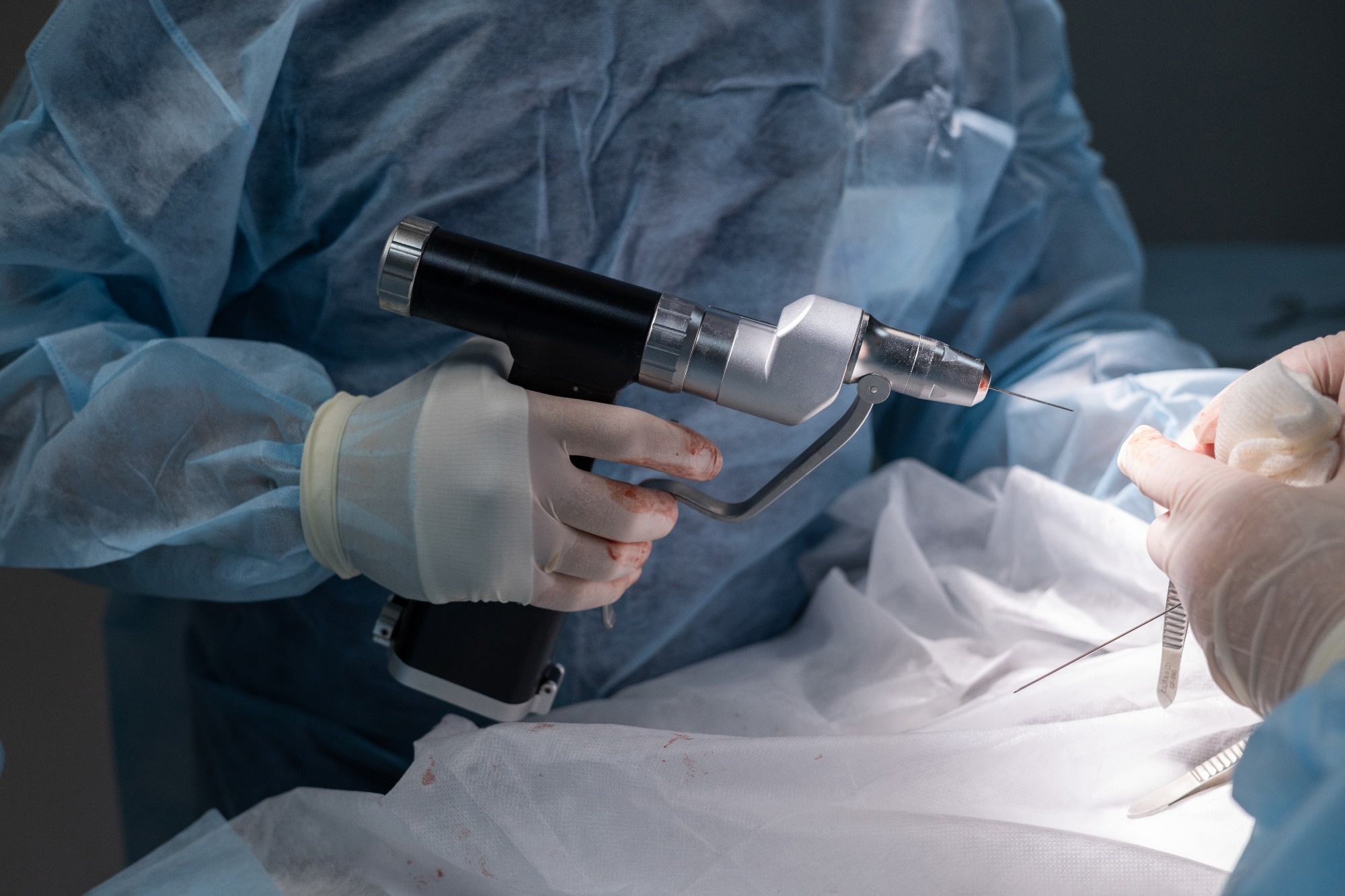Researchers at the Qingdao University of Technology have unveiled a cooling-assisted bone micro-grinding method that cuts heat and force, potentially making orthopedic surgery faster, gentler, and more precise.

Image Credit: Lebedko Inna/Shutterstock.com
Published in Frontiers of Mechanical Engineering, the study tests a new technique called ultrasonic vibration-assisted nanoparticle jet mist cooling (U-NJMC). The system combines ultrasonic vibration with a fine spray of nanofluid to keep bone cool and reduce resistance during cutting.
The nanofluid is prepared using normal saline as the base fluid, SiO2 nanoparticles as an additive, and PEG400 as a surface dispersant. Six grinding processes are configured: dry grinding, drip irrigation, ultrasonic vibration (UV), minimum quantity lubrication (MQL), NJMC, and U-NJMC, with the remaining processing parameters held constant.
The findings indicate the anisotropic properties of bone tissue, with the highest grinding force on the cross-section, followed by the side, and the lowest on the surface. This variation is due to differences in bone structure and force application mechanisms in various directions.
Using grinding fluid or ultrasonic vibration (UV) can minimize grinding force compared to dry grinding. U-NJMC micro-grinding produces the least grinding force, the lowest friction coefficient and specific grinding energy, and the greatest lubrication effect.
Dry grinding bone has the highest associated temperatures, whereas U-NJMC has the lowest. UV and NJMC can reduce temperature, and U-NJMC combines both benefits, considerably increasing the cooling medium’s convective heat transfer capacity and lowering the grinding temperature.
The grinding force, friction coefficient, specific grinding energy, and grinding temperature are evaluated and compared through grinding tests conducted under six distinct operating circumstances. The findings demonstrate U-NJMC's exceptional ability to lower temperature and grinding force, offering a new technical reference for the use of micro-grinding technology in orthopedic surgery.
Journal Reference:
Yang, Y., et al. (2025). Machinability of ultrasonic vibration-assisted micro-grinding in biological bone using nanolubricant. Frontiers of Mechanical Engineering. doi.org/10.1007/s11465-022-0717-z.